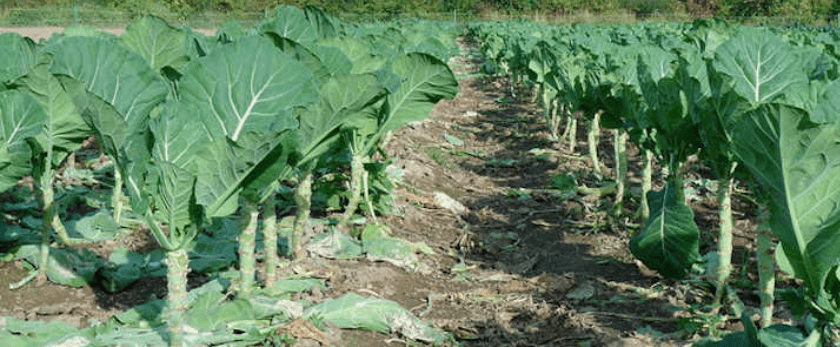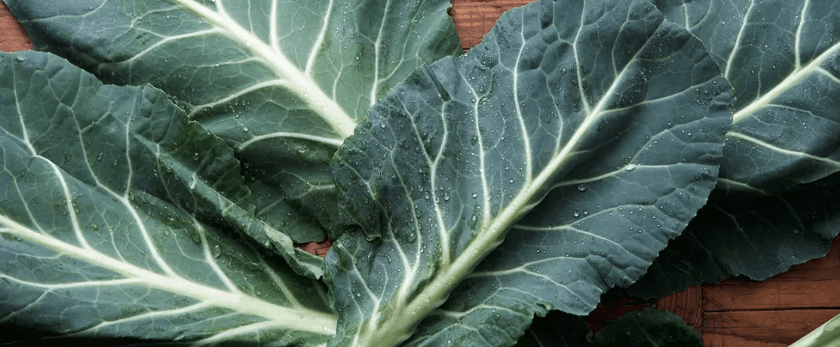Collard greens are a nutritious and versatile vegetable that can be grown in your own backyard. Not only are they packed with vitamins and minerals, but they are also easy to grow and maintain. In this article, we will discuss the steps to successfully grow collard greens, including caring for them, the best time to grow them, and common problems you may encounter.
Caring for Collard Greens
Watering
Collard greens require consistent moisture to thrive. They should be watered deeply once a week, providing about 1 inch of water. However, if you live in a hot and dry climate, you may need to water more frequently. It is important to keep the soil evenly moist, but not waterlogged, as this can lead to root rot.
Light
Collard greens prefer full sun, but they can also tolerate partial shade. If you live in a hot climate, providing some shade during the hottest part of the day can help prevent the leaves from wilting. If you are growing collard greens indoors, make sure they receive at least 6-8 hours of sunlight per day.
Soil
Collard greens thrive in well-draining, fertile soil. Before planting, amend your soil with compost or well-rotted manure to provide the necessary nutrients. The ideal pH for collard greens is between 6.0-6.5. You can test your soil's pH using a home testing kit or by sending a sample to a local extension office.
Fertilizer
Collard greens are heavy feeders and require regular fertilization to produce healthy and abundant leaves. You can use a balanced fertilizer, such as a 10-10-10, every 3-4 weeks. Alternatively, you can use organic fertilizers, such as fish emulsion or compost tea, which will also provide beneficial nutrients to the soil.
Pruning
Pruning is not necessary for collard greens, but it can help promote growth and prevent overcrowding. You can remove any damaged or yellowing leaves to allow for better air circulation and light penetration. Additionally, you can harvest the outer leaves as needed, which will encourage new growth from the center of the plant.

Best Time to Grow Collard Greens
Collard greens are a cool-season crop and can be grown in both spring and fall. They can tolerate light frosts, making them an excellent choice for early spring or late fall planting. In warmer climates, you can also grow collard greens during the winter months.
It is important to note that collard greens do not do well in hot weather. If you live in a region with hot summers, it is best to plant collard greens in the fall for a winter harvest. You can also provide shade during the hottest part of the day to help keep the plants cool.
Common Problems with Collard Greens
Pests
Collard greens are relatively pest-resistant, but they can still be susceptible to some common garden pests. These include cabbage loopers, aphids, and flea beetles. You can use organic methods, such as handpicking and using insecticidal soap, to control these pests. Additionally, planting companion plants, such as marigolds and garlic, can help deter pests.
Diseases
Collard greens can also be affected by diseases, such as clubroot and downy mildew. To prevent these diseases, make sure to rotate your crops and avoid planting collard greens in the same spot every year. You can also use disease-resistant varieties and practice good garden hygiene by removing any infected plants.
Nutrient Deficiencies
Collard greens can also suffer from nutrient deficiencies, which can affect their growth and overall health. The most common deficiencies are nitrogen, phosphorus, and potassium. You can use a balanced fertilizer to provide these nutrients, or you can use organic methods, such as compost and manure, to improve the soil's nutrient content.
Conclusion
Growing collard greens is a rewarding experience that can provide you with a delicious and nutritious addition to your meals. By following the care tips mentioned in this article, you can successfully grow collard greens in your own backyard. Remember to water consistently, provide adequate sunlight, and fertilize regularly to ensure healthy and abundant growth. With a little bit of effort, you can enjoy fresh collard greens straight from your garden.










